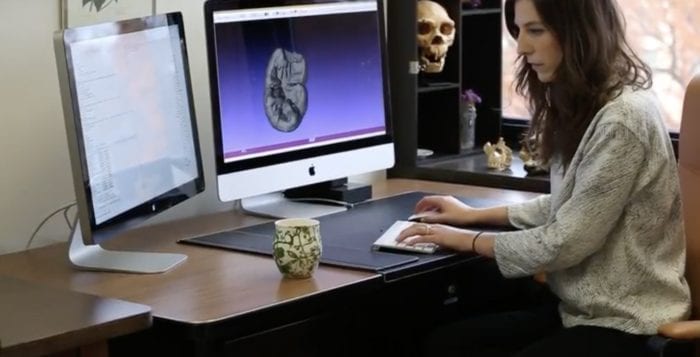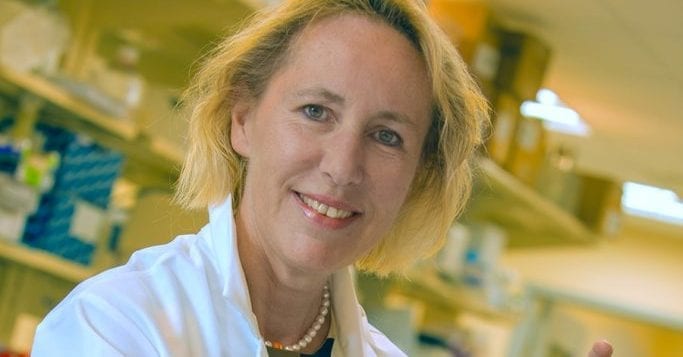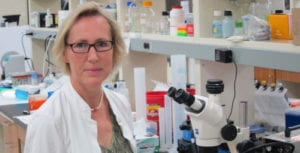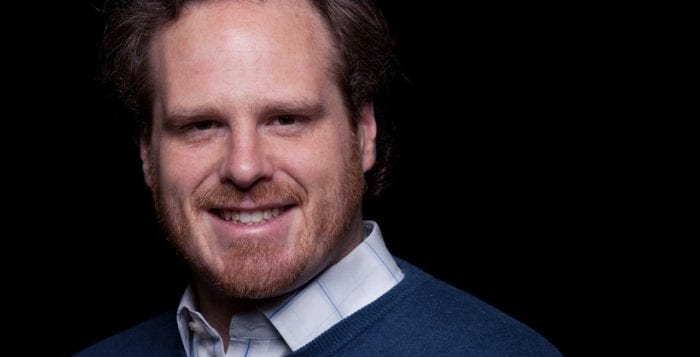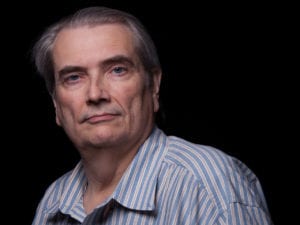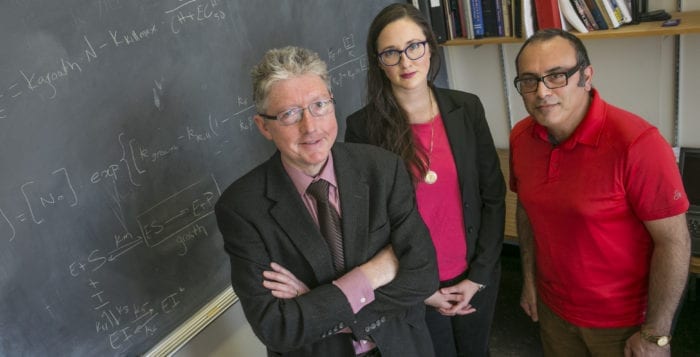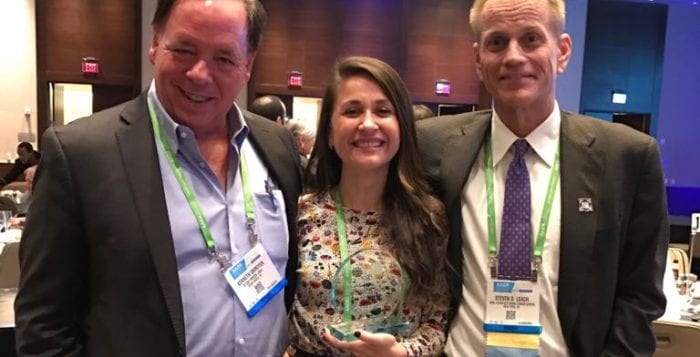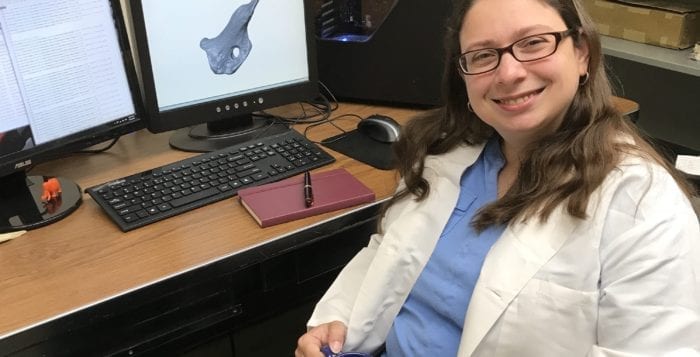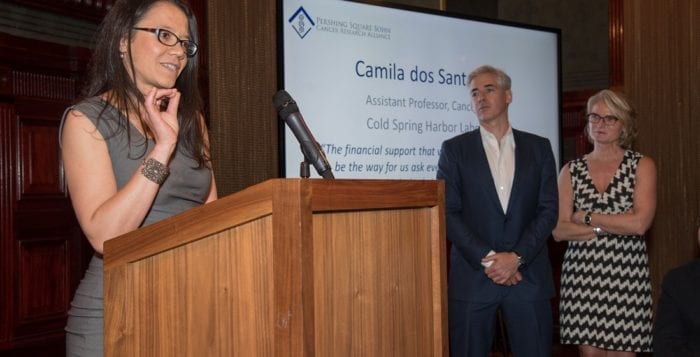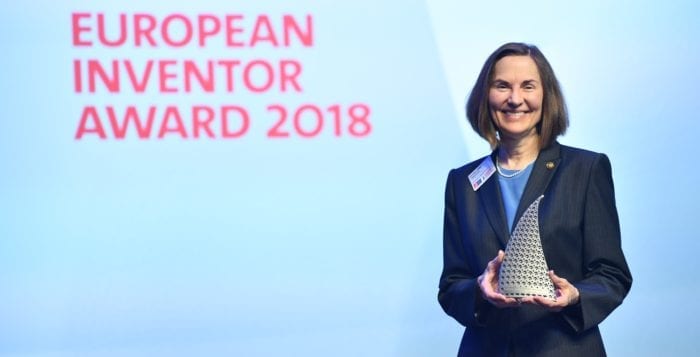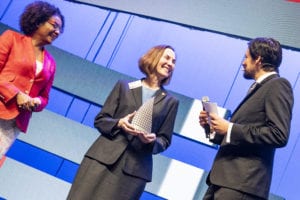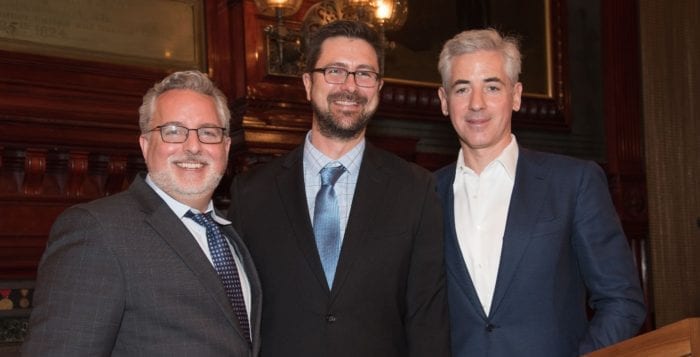By Daniel Dunaief
We have to walk before we can learn to run. It’s a common metaphor that suggests learning new skills, like playing the bassoon, requires a comfort level with notes and scales before taking on complex compositions.
As it turns out, the expression also applies literally and evolutionarily to the part of our anatomy that is so instrumental in enabling us to walk and, eventually, run — the foot.
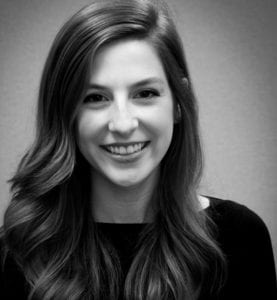
Carrie Mongle, a doctoral candidate in the Interdepartmental Doctoral Program in Anthropological Sciences at Stony Brook University, recently joined a host of other researchers, including former SBU scientist Peter Fernandez and current clinical assistant professor in biomedical sciences at Marquette University, in a study on the evolution of bones in the foot that made the transition to a bipedal lifestyle possible.
Published in the journal Proceedings of the National Academy of Sciences (PNAS), the work by Fernandez, Mongle and other collaborators explored the forefoot joints of ancient hominins, looking at primitive primates from as far back as 4.4 million years ago.
By comparing the toe joint shapes of fossil hominins, apes, monkeys and humans, they were able to find specific bony shapes in the forefoot that are important in the development of bipedal locomotion — or walking on two feet.
“This study demonstrates that early hominins must have been able to walk upright for millions of years, since the 4.4-million-year-old fossil Ardipithecus ramidus, but that they did not fully transition to a modern walk until much later, perhaps in closer relatives within our own group, Homo,” Mongle explained in an email.
While modern humans are most pronounced in doming, a few primates that walk on the ground have similar foot biomechanics to bipedalism and have similar morphologies in their toes. Those, however, aren’t expressed exactly the same way because their toe bones look different from hominins generally, she explained.
Like the drawings so often associated with a knuckle-walking ancestor that transition to a familiar outline of a person walking, the foot also went through various stages of development, balancing between the need to grasp onto objects like tree limbs and an efficient ability to walk, and then run.
“The foot is a complex assemblage of bones, so it makes sense that not all of them would have changed at exactly the same time,” Mongle suggested. “Our study supports the hypothesis that the transition to bipedalism was a gradual, mosaic process.”
Mongle got involved in this study after discussions with Fernandez, who was at SBU two years ago when the work began. Fernandez suggested to her that, “If we team up together, we can combine our interests and answer some questions about this feature,” she recalled.
Fernandez and Mongle found this dome shape developed in the foot bone even as this early fossil still maintained the ability to grasp tree limbs or other objects.
Fernandez and several other researchers involved in the study collected the data from the fossils, while Mongle, who focuses on cranial morphology and teeth in her own research, performed the evolutionary modeling. “My role in this research was in analyzing and explaining the evolutionary models, which allowed us to reveal the timing and sequence of events that produced the modern human forefoot,” she explained.
As for her doctoral research, Mongle is broadly interested in updating the hominin family tree. She uses mathematical models to look at variations in the fossil record. She is currently studying a cave in South Africa, where researchers have been recovering fossils since the 1930s.The cave has a considerable number of teeth that are all blended together from a period of between 2.5 million and 3 million years ago.
The teeth could tell a more complete story about how human ancestors divided up the food and local resources available to them. If different species were in the same space, they might have divided up into different groups to relieve competitive stress.
Frederick Grine, the chairman in the Department of Anthropology at SBU, offered a strong endorsement of Mongle’s research.“I have no doubt whatever that her work on the cranium and the dentition will provide invaluable insights into human phylogeny,” he wrote in an email, calling her an “exceptionally gifted research scientist” and described her as having an “extremely keen intellect.”
One of Mongle’s overarching research questions is, “How did we become human?” Reconstructing the phylogenetic tree is an important part of that exploration.
While it isn’t central to her thesis work, Mongle appreciated the opportunity to explore the transition to bipedalism, which is one of the “major turning points” in the development of humans.
Mongle explained that several possibilities exist on why human ancestors might have stood upright and walked on two feet.
“One of the prevailing theories is that upright walking may have evolved because climate change led to a loss of forests,” she wrote in an email. “As a consequence of walking upright, we now have free hands to carry tools.
Bipedalism evolved from a type of locomotion that was already efficient, so the question of its evolution remains open and is “hotly debated,” Mongle explained.
The next steps, literally and figuratively, are to study other bones in the feet. “We only looked at one particular part of the foot,” she said. “We would like to expand these approaches to using other bones in the forefoot,” seeking patterns and changes that would also contribute to a bipedal lifestyle.
Mongle, who started her doctoral research in 2012, hopes to graduate from the program next May, at which point she will be looking for postdoctoral research opportunities.

